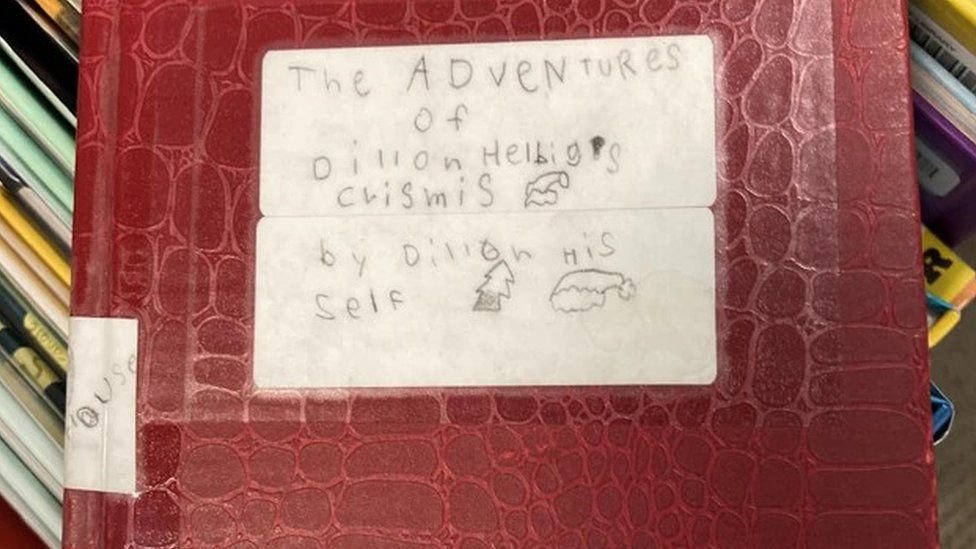Friday Faves - Your Weekly Strong Towns Roundup
On February 17, 7:00 p.m. CT, we’ll be hosting an online discussion and Q&A session about the film Owned: A Tale of Two Americas. Join Chuck Marohn, Daniel Herriges, and moderator Lauren Fisher for this casual event—and don’t forget your popcorn!
Nominations are coming in for the Strongest Town Contest. Is your city or town doing the hard work of becoming stronger and more resilient? If so, give it a chance to compete in our annual national tournament by filling out this form!
Comment of the Week:
This comment came from the article “Snow Day: Can Your City Pass the Winter Test?” Check it out here to join in on the discussion!
Here’s what Strong Towns staff were up to this week:
(Source: BBC / Susan Helbig.)
Lauren: Wow, this story made me smile. There’s a waiting list dozens of people long for an unexpected title at a Boise, Idaho, library. An 8-year-old self-published an 81-page handwritten story simply by sneaking it onto a shelf at his local library. Library staff found the Christmas tale and decided to enter it into the system. And people want to read it. Heck, I want to read it. What a great opportunity to consider how our adultish ideas on how things are supposed to work (only “writers” can write books…It’s up to other people to decide what books are included at the library…there have to be hundreds of copies of a book in many locations for it to count) hold us, and our communities, back.
(Source: Doris Mitsch.)
John: In the early days of the pandemic, photographer Doris Mitsch, like so many people around the world, was stuck at home. Yet the sky above her house was as alive as ever with birds. “While everything in my life has come to a standstill,” she wrote, “up in the air, there is still a lot going on.” Mitsch got out her camera and took a burst of photos of the birds. Then she combined the images into a composite that revealed the bird’s graceful flight pattern. Over the last two years, Mitsch has continued to create these composites, not just of birds near her home, but along the coast and in the desert. She calls the series “Locked Down Looking Up.” The results are truly mesmerizing. My personal favorite is “Lockdown Vulture.” What’s yours?
Chuck: My good friend, Joe Minicozzi, recently released an open letter and a video celebrating ten years of his firm, Urban3. A lot of people confuse our work at Strong Towns with Urban3’s—and even credit us for their great work—because we have collaborated with them a lot and share their compelling work as often as we can (it’s some of our most popular content). Joe and the team at Urban3 deserve a ton of credit for helping change the conversation around fiscal analysis of land use patterns, making the strongest case out there for productive urban development. Take a moment to watch the video and give them a little love in the comments. A bonus for those of you in the Orlando area: Joe and I, along with Cate Ryba of Urban3, will be speaking together at a public event in Oviedo, Florida, on February 23.
(Source: Flickr.)
Jay: For reasons I don’t understand, my wife’s family—to a person—think the apex of humor is when someone falls down, slapstick style. Especially if it happens to one of them. They will laugh uncontrollably through any amount of pain. So, it’s no surprise that my wife sent me this article about a pedestrian bridge in Venice which is paved with slippery glass panels which terrify the locals and break the bones of unsuspecting tourists. The designer has been successfully sued. Many attempts to fix it have been made, the latest documented here in Curbed. I won’t be surprised if Venice is proposed for a family vacation.
(Source: Flickr.)
Rachel: Strong Towns member Tyson Mohr is featured in this recent interview/article with WGLT radio, talking about the problems of the suburban development pattern and the need to build or rehab homes within core neighborhoods, rather than expanding out on the edge of town. Mohr is the Planning Commission chair in Bloomington, Illinois. As so many communities are facing housing shortages and wondering where to build more homes, conversations like this are essential if we want to ensure prosperity for our neighborhoods and financial stability for our cities. As Mohr states in the WGLT interview, “Unless we make some deliberate choices to change the way that we do things, we’re going to fall back into the well-worn development pattern we’ve been using for the last several decades. That’s a development pattern that’s bankrupted cities across the country.”
—
Finally, from all of us, a warm welcome to the newest members of the Strong Towns movement: Colin Ake, Hank Doyle, Sara Easler, Susan Engelking, Jeroldine Hallberg, Jamison Holt, Kenann McKenzie-DeFranza, Steve Morgan, Darlene Rose, Mary Sayer, Michael Southerland, and Don Young.
Your support helps us provide tools, resources, and community to people who are building strong towns across the country.
What stories got you thinking this week? Please share them in the comments!





